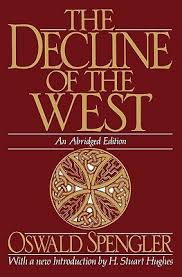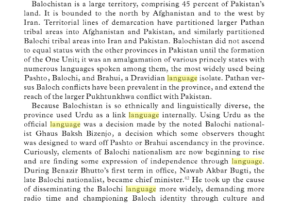
Month: August 2018
Genetics stories in India Today
4500-year-old DNA from Rakhigarhi reveals evidence that will unsettle Hindutva nationalists:
The ‘petrous bone’ is an inelegant but useful chunk of the human skull — basically it protects your inner ear. But that’s not all it protects. In recent years, genetic scientists working to extract DNA from ancient skeletons have discovered that, thanks to the extreme density of a particular region of the petrous bone (the bit shielding the cochlea, since you ask), they could sometimes harvest 100 times more DNA from it than from any other remaining tissue.
Now this somewhat macabre innovation may well resolve one of the most heated debates about the history of India.
And, from me, 3 strands of ancestry.
Nothing new for close readers. I would caution
1) Many Hindu nationalists really don’t care and are not perturbed by these findings. I know, because I know them.
2) I don’t know if the paper is going to be published soon. It may, but we’ve been waiting two years now.
The passing
In 1998 Bill Clinton stated:
Today, largely because of immigration, there is no majority race in Hawaii or Houston or New York City. Within five years, there will be no majority race in our largest state, California. In a little more than 50 years, there will be no majority race in the United States. No other nation in history has gone through demographic change of this magnitude in so short a time … [These immigrants] are energizing our culture and broadening our vision of the world. They are renewing our most basic values and reminding us all of what it truly means to be American.
The year 2050, or whatever date you want, is when “whites” will become a “minority.” Both words are in quotes, since what counts as “white” and “minority” matter a great deal in terms of these quantities. Clinton, like many liberal(ish) white Americans, did not look upon that future with dread or anxiety. Rather, he was, and presumably is, hopeful. At the time many people asserted that Bill Clinton was arguably the first American president who was personally comfortable with nonwhites. After all, Vernon Jordan was one of his closest friends.
And yet here are the demographics of the town where Bill & Hillary chose to settle down after the 1990s:
. The racial makeup of the CDP was 91.80% White, 0.94% African American, 0.03% Native American, 5.62% Asian, 0.02% Pacific Islander, 0.52% from other races, and 1.07% from two or more races. Hispanic or Latino of any race were 2.55% of the population.
 Bill may look forward to our bright diverse future of 2050, but he lives socially and demographically in 1950. And he’s not alone.
Bill may look forward to our bright diverse future of 2050, but he lives socially and demographically in 1950. And he’s not alone.
To me, this is the important lacunae left out in Panjak Mishra’s op-ed in The New York Times, The Religion of Whiteness Becomes a Suicide Cult. The op-ed is a testament to the fact that even a sophist must speak the truth now and then. It is certainly true that there is a discomfort and disquiet in the world as the long centuries of white supremacy, in the most literal and descriptive sense, slowly come to a close. Naturally, Mishra points the finger at figures from the past, who can’t dispute his disdain, as well as those individuals such as Donald Trump, whom the readers of The New York Times see as heralds of reaction and regression.
 But the truth is that as the “the rising tide of color against white world-supremacy” begins to crest even the “good whites,” the “progressive whites,” will begin to become uncomfortable and unmoored. The noblesse oblige of progressive whites is predicated on the reality and fact of their privilege, of their dominion over the colored races. And yet the reality is that many of these progressive whites show revealed preferences which are not much different than non-progressive whites. On the whole, they live amongst other whites, socialize with other whites, and marry other whites.
But the truth is that as the “the rising tide of color against white world-supremacy” begins to crest even the “good whites,” the “progressive whites,” will begin to become uncomfortable and unmoored. The noblesse oblige of progressive whites is predicated on the reality and fact of their privilege, of their dominion over the colored races. And yet the reality is that many of these progressive whites show revealed preferences which are not much different than non-progressive whites. On the whole, they live amongst other whites, socialize with other whites, and marry other whites.
Having lived in California, around white people who are politically far more liberal than I am, I have a bit of personal experience with how these “revealed preferences” work. Rather than anecdotes, I’ll just point to this article, Ghosts of white people past: witnessing the white flight from an Asian ethnoburb.
The “passing of the great race” is a far bigger story than nationalism, racial or otherwise. It is the expiration of a whole Weltanschauung. An undermining of assumptions. The death of a world civilization, and the birth of a new one.
Urdu as an intra-provincial link language
Vikram made the novel point that the use of Urdu in Punjab was a way to bind an ethnically diverse province (Seraiki in the South).

Speaking Like a State Continue reading Urdu as an intra-provincial link language
Sikh-American President?
https://www.facebook.com/NowThisOpinions/videos/vb.301565040380161/2139764439614338/?type=2&theater
Razib mentioned that different generations of immigrant-Americans had different experiences. When I hear the chap above and his Obamaesque accent (plus level of eloquence); it’s difficult to find the parallel in Britain.
The immigration and diaspora experience in Britain is more similar to the 1920’s Eastern and Southern European immigrants. To give a more precise analogy; post 1965 most Indian Americans immigrated as individuals or as families (except maybe the Patels) however in Britain it was almost communal immigration.
My friend’s father (who is a Sikh) moved to Britain in the 50’s/60’s from the Punjab. He was a civil servant in India and it was actually Enoch Powell who thought Indian civil servants could fill the labour gap in post-war Britain. He immigrated with less than 5 pounds (that was the limit they were allowed to bring) and his children are particularly British (half of them have white British spouses which is uncommon for that cohort, even now intermarriage is sub 10%). Even though he immigrated as a young man his friends had also moved and they had essentially formed a friendship cluster. So even though my friend grew up in a very white area she does remember that the family’s social grouping was still fairly Sikh (and competitive as all the parents had started with the same 5 pounds so the competition was on).
The British Asian experience is almost sui generis. For instance Asian-Americans usually denotes East Asians whereas British Asians immediately signified Desis (Orientals was apparently the term used for our more Far Eastern cousins).
As a final note Britain is an extraordinarily class-obsessed society and aesthetics is usually correlated with class. America, at least from this side of the Atlantic, seems a much more balanced society and the aesthetics of the immigrant populations are usually more pleasing. Americans are probably the best-groomed people in the world, on the whole (notwithstanding notable exceptions) and prosperity is linked to beauty.
Mr. Grewal cuts a very impressive profile both with his mannerisms and profile. He really reminds me of a Sikh Obama. Maybe he will run for President since he really does Brown Proud.
On the genetics of Bengal and Southeast Asia
Over at my other weblog, genetics post some readers might have an interest in. I think in the near future I’ll be talking more about the genetics of Southeast Asians and how they were influenced by Indians. Long story short: there’s a significant Indian genetic impact in many areas of Southeast Asia that can’t be ascribed to colonialism. Rather, the spread of Indian culture in the region was probably catalyzed by Indians….
Suno Punjab
We’ve been watching the excellent Suno Chanda. It’s the story of a respectable Muhajir industrialist family in Karachi but features some ethnic characters as well (a Punjabi mother in law and a Pathan Uncle).
Even though I spent formative years in Islamabad the only ethnic language I was exposed to was Pushto, which was the domain of the labourers, house help and security guards. Punjabi was simply non-existent and Urdu & English were the dominant languages. So I haven’t heard much Punjabi and to be honest growing up all the Punjabi neighbours were the “Pakistanis” while the Sindhis, Pathans were the exotics.
So for the first time I’ve really been listening to the Punjabi language in sustained doses.
Udaari and Dastaan also had Punjabi speakers but in Dastan the Muslim Punjabis spoke chaste Urdu while it was the Sikh kidnappers who lapsed into comical Punjabi.
What is rather shocking to me is how Punjabi sounds like a rustic version of Hindustani. A sort of Braj Brasha for the East?
What makes Sindhi a teachable language but Punjabi a foul one?
Little did the opposing party know that this could be expected of any language spoken in Pakistan but Punjabi, for it is considered by our beau monde to be an illiterate version of Urdu owing to the likeness of the two languages. Speaking Punjabi in public is frowned upon and is not used by our nonpareil A-list to even communicate with servants. The current status of this 14-centuries-old language can be gauged by the simple inclination of Asif Ali Zardari to deliver at least some part of his speeches in Sindhi, but the smirks and guffaws that erupt in assemblages of the Pakistan Tehreek-e-Insaf when Imran Khan utters a single phrase in Punjabi.
Something has happened in the history of Punjabi whereby Hindustani speakers pushed Westward into the Lahore region (Amritsar is essentially a Lahori suburb). As an aside in the “Sacred Geography” of India; are there any Hindu holy sites in present-day Pakistan?

What is interesting is that all the “Lahnda” (Western) dialects of of Punjabi are in Pakistan and all the Eastern dialect (except for the prestigious and no doubt Hindustani influence Majhi) are in India. Continue reading Suno Punjab
whitening Jain Music
Vidhi and I have gotten into this song since it’s so catchy. The artist is French and a quarter Malagasy. But she looks straight up “Caucasian” to the extent that she has to emphasize her exotic background (probably also to insulate herself against claims of cultural appropriation – the Twitter handle “Jain Music” belongs to her).
Open Thread
Please keep the other posts on topic. Use this for talking about whatever you want to talk about.
India: the north-south disparity
Excerpts
Four of the top five states are from the south, with Kerala leading the list. Tamil Nadu is at number two on the survey which ranks states across a three-year period.
A notable inclusion in the top three is the state of Telangana, which was created in 2014, carved off from Andhra Pradesh/
The bottom spots of the survey were taken up by states from the north: Madhya Pradesh, Jharkhand and Bihar.
States in India have a wide remit with control over water, agriculture, land rights, public health and order, theatres and entertainment, even duties on opium and other narcotics, and in some cases are as powerful as an individual country in a continent such as Europe might be. Uttar Pradesh, home to 200 million people, would be the world’s fifth biggest country if it were an autonomous nation,
States are linguistically diverse, culturally and socially varied – for example, in the cluster of eight northeastern states which border China and Myanmar, people look eastwards for their cultural cues, eschewing Bollywood in favour of K-pop, and prefer soccer to cricket. Home to matrilineal societies, women are far more visible in everyday life than in the “cow belt” states of central India.
Kerala too, is markedly different from the north. It has the highest literacy rate in the country, at more than 93%, as well as a high life expectancy and the best gender ratio in the country. It also tops the UNDP-sponsored Human Development Index thanks to high standards in sanitation, health, education and poverty reduction.
But for all of its highs, Kerala – indeed, all of south India – is about as appealing to the central government as coconut oil in butter chicken. In north India, southerners are universally mocked with the pejorative “Madrasis” (a reference to the former name of the city of Chennai). South Indians are looked down on for their dark complexions, their mannerisms, even their diets. Keralites eat beef.
It might be worth noting that four out of the top five best-government states are not ruled by the Hindu-right BJP, but the party does preside over the three states that come last in the survey.
At the same time, a handful of social media posts claimed the floods were divine justice for the beef-eaters.
From
https://www.lowyinstitute.org/the-interpreter/india-north-south-disparity
